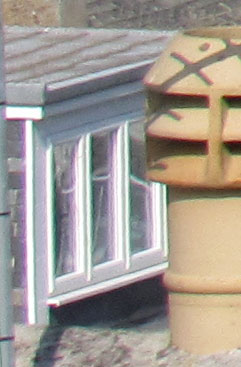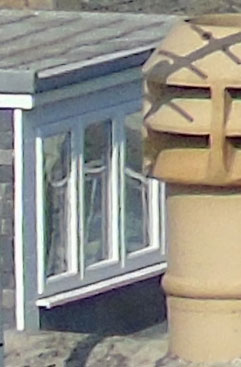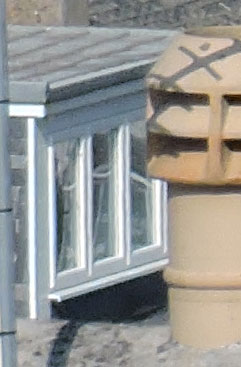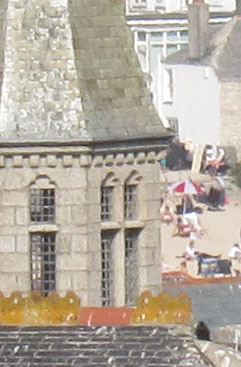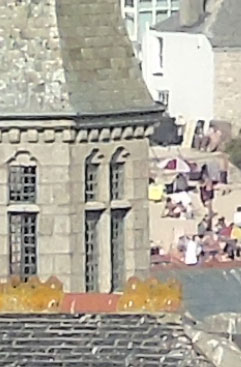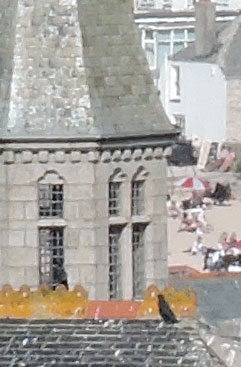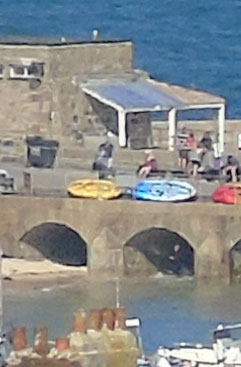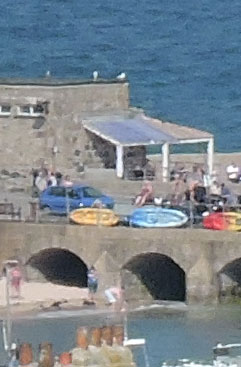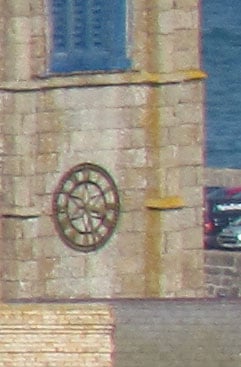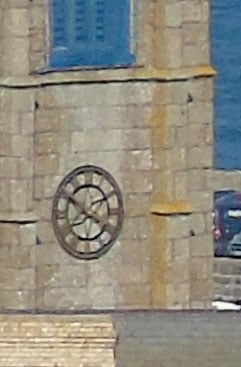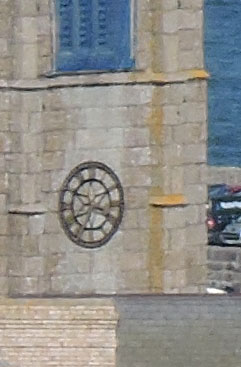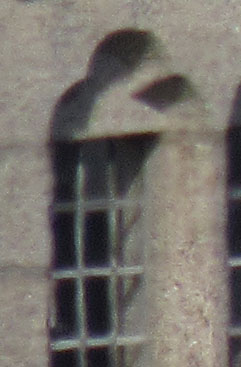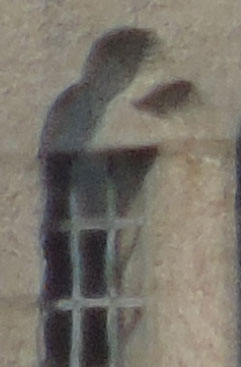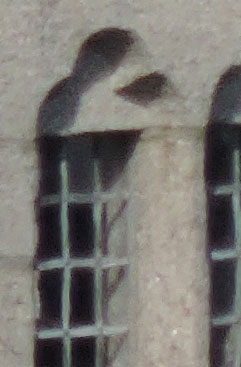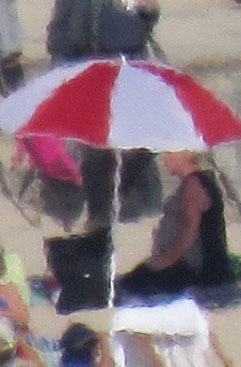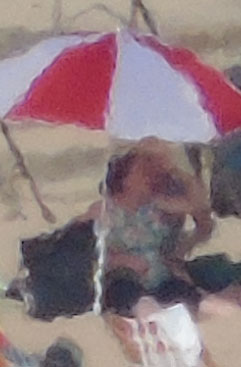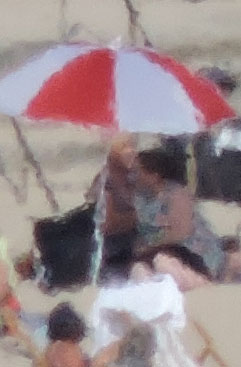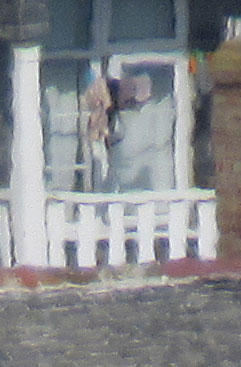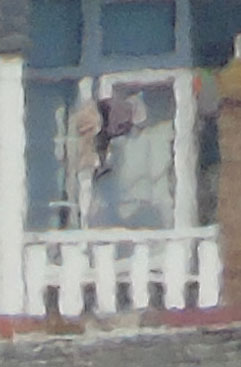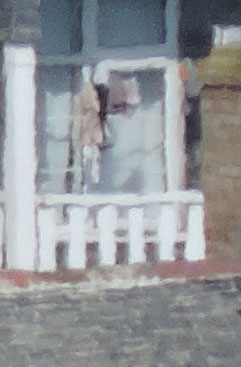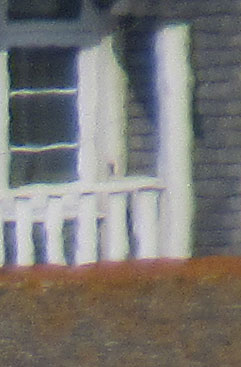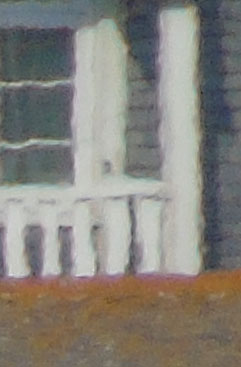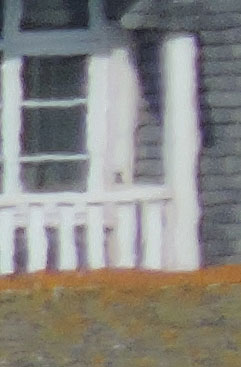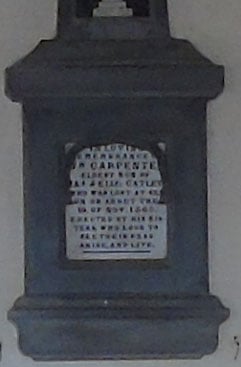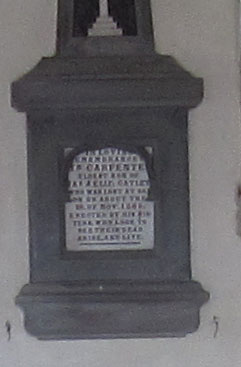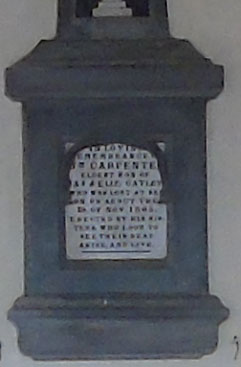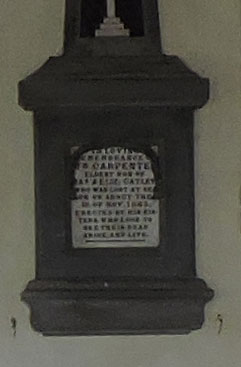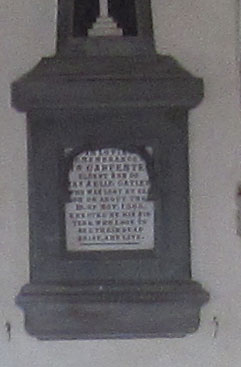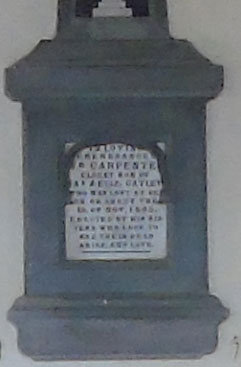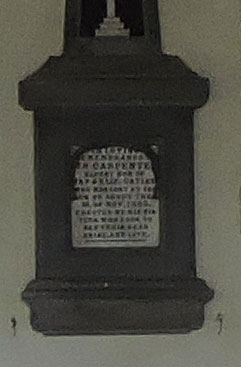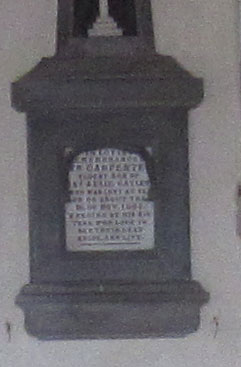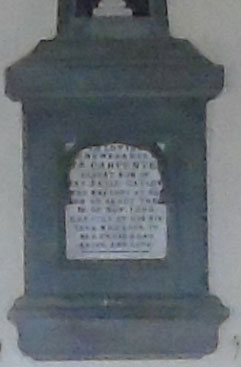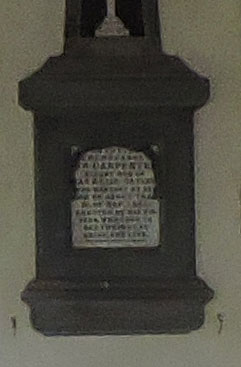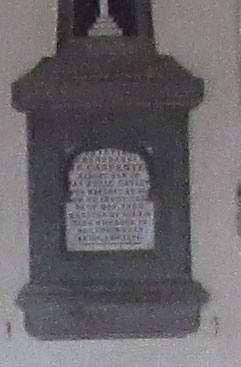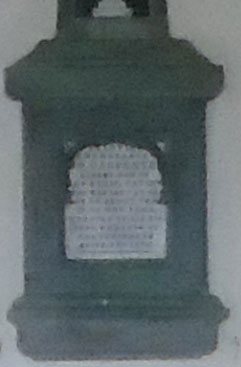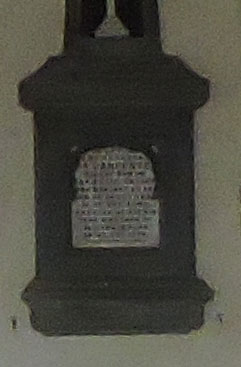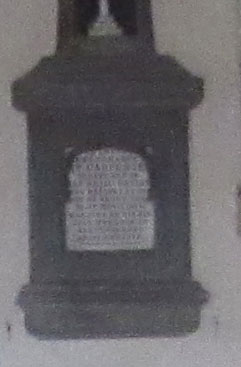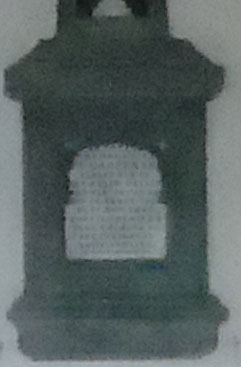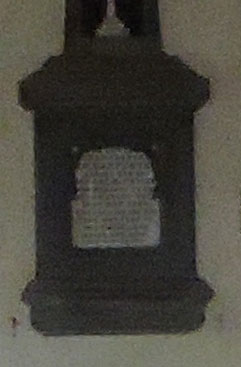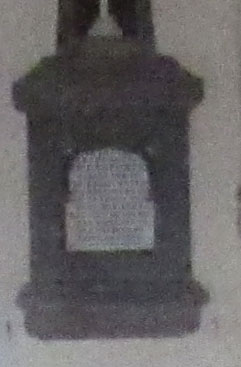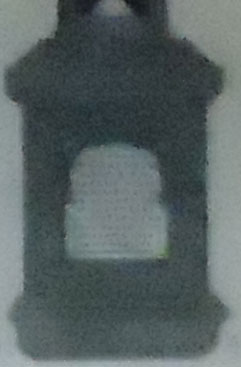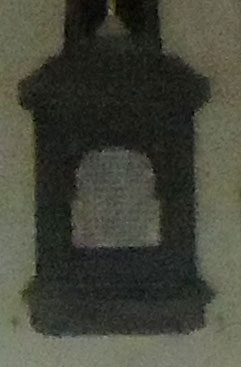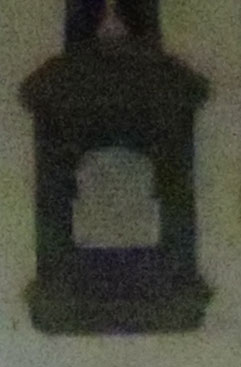Canon PowerShot SX520 HS review
-
-
Written by Ken McMahon
Quality
Canon SX520 HS vs Sony H400 vs Nikon P530 quality
To compare real-life performance I shot this scene with the Canon PowerShot SX520 HS, Sony Cyber-shot H400 and the Nikon COOLPIX P530 within a few moments of each other using their best quality JPEG settings.At 24.5mm equivalent, the wide angle setting on the Sony H400 isn’t quite as wide as the 24mm wide angle of the SX520 HS and P530, but in practice the difference is very small and it’s impossible to zoom the lenses by such a small amount, so all three were left on their widest settings.
The Cameras were set to Aperture priority mode and f4 selected which produced the best results. The COOLPIX P530 closes the aperture in 0.3EV increments from the widest avaiable option (f3 at the widest setting) so I chose f4.2 as the closest to f4.
For this test the cameras were mounted on a tripod and image stabilisation was disabled. The ISO sensitivity was manually set to the lowest available setting and all other settings were left on the defaults.
The image above was taken with the Canon PowerShot SX520 HS. The camera was set to Aperture priority mode and at f4 with the sensitivity manually set to the base 100 ISO setting the SX520 HS selected a shutter speed of 1/1250. The Sony H400 was also set to f4 and at its base 80 ISO sensitivity setting metered a shutter speed of 1/800. The Nikon COOLPIX P530 metered 1/800 at f4.2 and 100 ISO. As usual the crops are taken from the areas marked in red above.
The first thing that’s noticeable about these crops from the PowerShot SX520 HS is that they all look a little noisy. The back illuminated CMOS sensor in the SX520 HS is designed to produce low levels of noise at higher ISO settings, but at the base 100 ISO setting it’s far from noise free.
Aside from a slight graininess, though, the quality of the crops is very good. At the wide angle setting there’s little evidence of distortion at the edges and there’s a good level of detail with nice clean edges. The detail in the first crop from close to the left edge of the frame is a little soft, but the church tower crop from close to the centre of the frame looks sharper and the distant lighthouse in the third crop is a distinct white column.
The crops from the 20 Megapixel Sony H400 show a smaller area with slightly larger details, but I don’t think the Sony sensor is delivering any more detail. In other words the detail is bigger, but not necessarily better in the Sony H400 crops. The COOLPIX P530 with its 16 Megapixel sensor delivers same sized crops as the PowerShot SX520 HS, but the P530 crops don’t look quite so sharp and detailed. The difference is most noticeable in the church tower crop from close to the middle of the frame, but the SX520 HS is also cleaner and sharper at the edges.
So, overall a pretty good result at the wide angle setting for the PowerShot SX520 HS which holds its own against the Sony H400 and outclasses the COOLPIX P520.
Scroll down the page to see how these models compare when zoomed in to 135mm, and 1000mm equivalent focal lengths, or to see how they compare at higher sensitivities check out my Canon SX520 HS noise results.
Canon SX520 HS | Sony H400 | Nikon P530 | ||
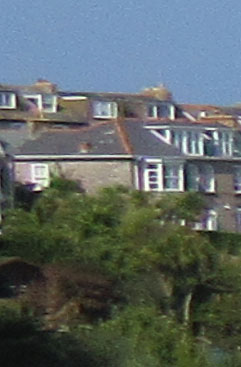 | 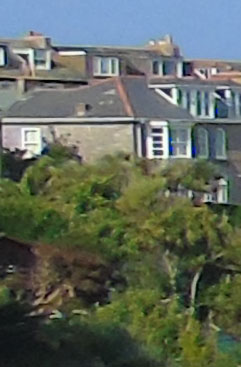 | 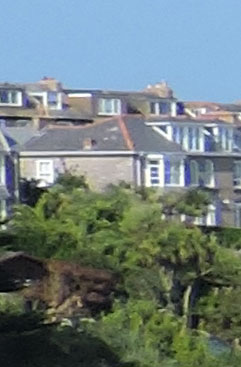 | ||
f4, 100 ISO | f4, 80 ISO | f4.2, 100 ISO | ||
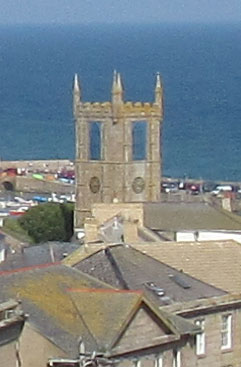 | 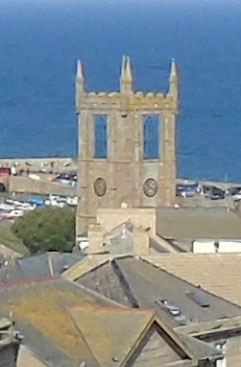 | 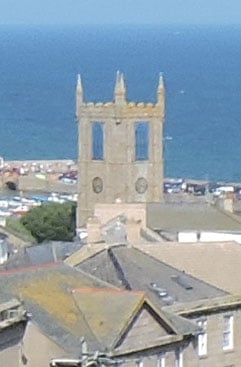 | ||
f4, 100 ISO | f4, 80 ISO | f4.2, 100 ISO | ||
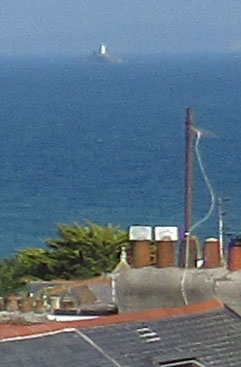 | 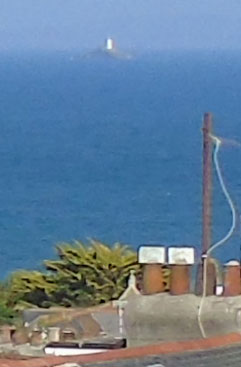 | 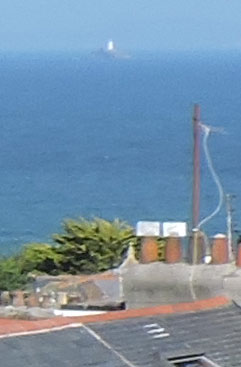 | ||
f4, 100 ISO | f4, 80 ISO | f4.2, 100 ISO | ||
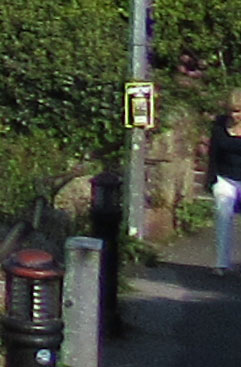 | 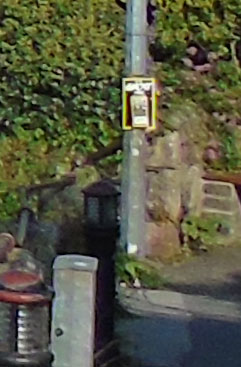 | 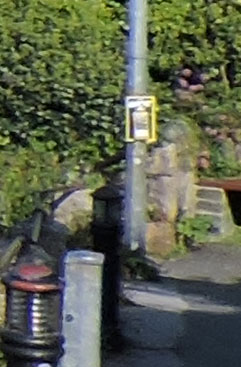 | ||
f4, 100 ISO | f4, 80 ISO | f4.2, 100 ISO |
Canon SX520 HS vs Sony H400 vs Nikon P530 JPEG quality at approx 135mm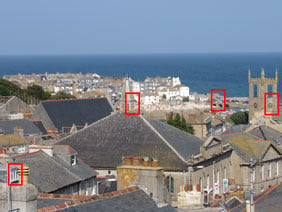 For this next test I zoomed all three cameras in to an equivalent focal length of around 135mm. This time in each case I set the aperture to the widest available setting, f5, f4.6 and f4.3 respectively on the SX520 HS, H400 and P530. This time the first crop from the PowerShot SX520 HS shows very noticeable colour fringing, but other than that the edge quality is good and only a tiny bit softer than in the middle. The two crops from closer to the centre of the frame show a good level of detail as before, but it would be even better if it weren’t for the slightly noisy granular quality. Moving on to the crop from the right edge of the frame once again it’s slightly softer and there’s a little bit of uncorrected chromatic aberration. When zoomed in to this focal length, there’s much less of a difference between these three models than at the wide angle setting. The first crop from the Sony H400 actually looks sharper and more detailed than the one from the SX520 HS. In the middle there’s not much in it, as before, the Sony H400 detail is bigger, but not better. On the right side of the frame though the Sony crop is once again crisper. The COOLPIX P530 also raises its game once zoomed in a little with cleaner sharper results broadly comparable with those from the SX520 HS in the middle, but slightly better at the edges.
Canon SX520 HS vs Sony H400 vs Nikon P530 JPEG quality at approx 1000mm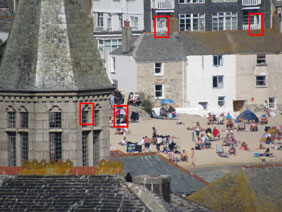 For this final test I zoomed the PowerShot SX500 HS in to its maximum 1008mm focal length. The COOLPIX P520 was also zoomed to it’s maximum – just short of the Canon at 1000mm and the Sony H400 was zoomed in to match the same angle of view. As before, I set the maximum available aperture on each camera, f6, f6.2 and f5.9 on the SX520 HS, H400 and P530 respectively At its maximum zoom range of 1008mm the Canon SX520 HS is still producing reasonably good results though, as a quick glance at these crops will reveal, there’s a loss of finer detail which produces an impressionistic result. This affects all three models to a similar degree and is most likely a result of atmospheric disturbance – as such it’s quite hard to evaluate the models here. That said, I think the PowerShot SX520 HS produces a slightly cleaner and more detailed result than either the Sony H400 or the Nikon P530 at this focal length. Before we move on I should point out that the Sony H400 still has a way to go before reaching its maximum 1550mm equivalent focal length. To see how that looks check out my upcoming Sony H400 review. Now check out my Canon SX520 HS noise results, or skip to my Canon SX520 HS sample images or head straight for my verdict.
|
Canon SX520 HS vs Sony H400 vs Nikon P530 noise
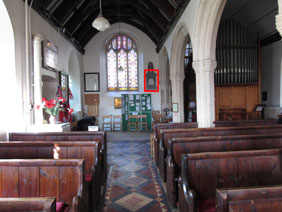
To compare noise levels under real-life conditions, I shot this scene with the Canon PowerShot SX520 HS, the Sony Cyber-shot H400 and the Nikon COOLPIX P530 within a few moments of each other using their best quality JPEG settings at each of their ISO sensitivity settings.
At 24.5mm equivalent, the wide angle setting on the Sony H400 isn’t quite as wide as the 24mm wide angle of the SX520 HS and P530, but in practice the difference is very small and it’s impossible to zoom the lenses by such a small amount, so all three were left on their widest settings.
The cameras were set to Aperture priority mode and f4 selected which produced the best results. The COOLPIX P530 closes the aperture in 0.3EV increments from the widest available option (f3 at the widest setting) so I chose f4.2 as the closest to f4. For this test the cameras were mounted on a tripod and image stabilisation was disabled. Active D Lighting is off by default on the COOLPIX P530, DRO was disabled on the Sony H400. All other settings were left on the defaults.
The image above was taken with the Canon PowerShot SX520 HS. The SX520 HS was set to Aperture Priority mode and at its base 100 ISO sensitivity setting with the aperture set to f4 metered a shutter speed of 1/4s . The Sony H400 metered 1/4 at f4 and 80 ISO and the Nikon COOLPIX 1/6 at f4.2 and 100 ISO.
As we saw on the outdoor test, the base 100 ISO crop from the Canon SX520 HS shows a quite visible level of noise. It’s very fine grained and fairly unobtrusive, but there’s no denying its presence and that fact that you’d be able to see a little bit more of the fine detail if it wasn’t there. The other thing about seeing this level of noise at the base ISO setting is that it lowers the quality bar at every step up the sensitivity scale. And if you look at the 200 ISO crop you’ll see that the noisy pixels look a little clumpier, making the text on the memorial panel a little less legible.
As you’d expect, there’s another hike in the noise levels at 400 ISO, but these are small steps and overall, the SX520 HS produces good results in the lower range of the sensitivity scale. At smaller sizes you can’t see much of a difference between these settings and even at full size the quality looks reasonably good.
At 800 ISO, though, the cumulative effect of those small steps, given the noise level to start with at 100 ISO, starts to tell, the entire crop area has a distinct salt and pepper look and the level of detail is really beginning to suffer. At 1600 ISO the noise threatens to overtake the detail, at smaller sizes it doesn’t look at all bad, but you’d be disappointed with a full sized print. 3200 ISO is ugly, but a useful setting for those ‘must have no matter what’ shots.
The crops from the Sony H400’s 20 Megapixel sensor show a smaller area with slightly larger detail than those from the Canon SX520 HS and Nikon COOLPIX P530, both of which have 16 Megapixel sensors. The other difference is that the H400’s sensor is a CCD design as opposed to the CMOS chips in the Canon and Nikon models. The Sony has a base 80 ISO setting which is similar in noise levels to the 100 ISO crop from the SX520 HS. Overall there looks to be more aggressive noise reduction on the Sony H400 and the crops look smoothed and less grainy than those from the SX520 HS, but less detailed too. I think it would be fair to say that while the SX520 HS and H400 are comparable at their base ISO settings, the more aggressive noise reduction required by the H400’s higher resolution CCD sensor renders images with significantly less detail at the higher ISO sensitivity settings
Interestingly, aside from the white balance, there’s very little in it between the SX520 HS and COOLPIX P530. Throughout the sensitivity range both sets of crops display very similar noise quality characteristics.
| ||||||||||||||||||||||||||||||||||||||||||||||||||||||||||||||||||||||||||||||||||||||||||||||||||||||||||||||||||||||||
